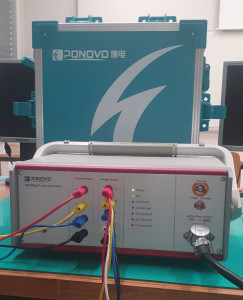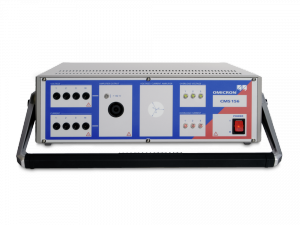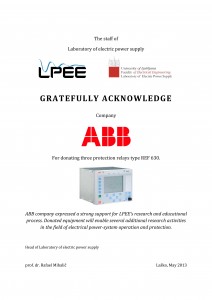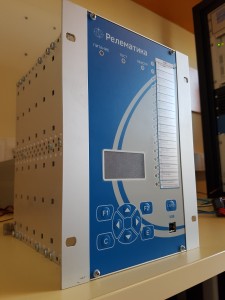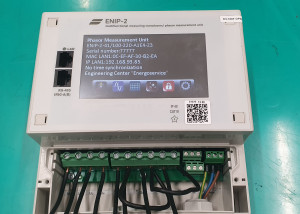Voltage and current amplifier from the manufacturer PONOVO Power Ltd. type PA30Bip-H
The equipment meets all required technical specifications dictated by HIL testing with an RTDS simulator. The dimensions of the product make it easy to transfer the device.
The phase-by-phase input voltage signals correspond to the RTDS output simulator (0-7 V RMS or ±10 V peak-to-peak), and the amplified voltage is in the maximum range of 0-250 V RMS (fixed voltage gain in the ratio 36V/V), which also allows verification of compliance of PMU units (PMUs) to be carried out. Phasor-Measurement Unit) with C37.118. In doing so, the output power may even exceed 75 VA at a maximum voltage of 250 V. The error of mapping the input voltage signal to the output voltage shall not exceed 0.2 % (in the vast majority of cases even half smaller, i.e. about 0.1%), the phase delay in the process of voltage amplification does not exceed 0.2°, which is approximately 11 μs at the rated frequency of the electricity system of continental Europe (50 Hz). In addition, the frequency range of appropriately amplified voltage signals is wide, ranging from DC voltage (DC with a frequency of 0 Hz) to 3 kHz. The harmonic distortion ratio shall not exceed 0,1 %.
The current part of the amplifier has input voltage signals of the same rank, i.e. 0-7 V RMS (±10 V peak-to-peak), which, in turn, are converted by the device into corresponding current quantities with fixed amplification of 4 A/V. In each phase, the amplifier can generate current from 0-30 A (RMS), with the output power even exceeding 450 VA. The error of mapping the input voltage signal to the output current does not exceed 0.2% (in the vast majority of cases even half lower, i.e. about 0.1%), the phase delay in the current amplification process shall not exceed 0,2°, which is approximately 11 μs at the rated frequency of the continental Europe electricity system (50 Hz). In addition, the frequency range of appropriately amplified signals is wider than with voltage gain, ranging from DC voltage (DC frequency 0 Hz) to 5 kHz. The harmonic distortion ratio shall not exceed 0,2 %.
Equipment rental: 83,19 EUR/hour
Omicron CMS 156
Amplifier unit can be used in combination with any Omicron CMC test set or in conjunction with digital real-time power system network simulators such as RTDS. It is in general a 3-phase voltage and current amplifier (3 x 250 V, 1 x 500 V; 3 x 25 A, 1 x 75 A). However, it enables also amplification of six independent voltage phases (e.g. for testing synchronizing devices with two independent three-phase voltage systems), more current channels than CMC test-sets and in combination with CMC 156 EP set a higher voltages, currents and power output are achievable.
TOR 300 (product of Relematika, Ltd)
TOR 300 is a microprocessor-based device (also IED) intended for relay protection, system integrity protection, control and signalling functions in 6 kV to 750 kV power networks. Specialists at Relematika, Ltd generously invested their valuable efforts into implementing the innovative UFLS concept to TOR 300 and by this enabling further R&D work on this topic.
Multifunction measuring device ENIP-2-41/100-220-A1E4-23 (manufacturer: LTD Engineering Center ENERGOSERVICE)
The device measures variables of a three-phase electrical network, i.e. voltages (phase and interphase RMS) and currents (RMS) of the basic harmonic component, operational, reactive and apparent power (phase and total), active and reactive energy, and parameters important for assessing the quality of electricity. In the laboratory, it is mainly used because of the functionality of the PMU device (Phasor Measurement Unit). ENIP-2 can exchange data via the RS-485 communication port (Modbus protocol and IEC 60870-5-101) or Ethernet (Modbus protocols, IEC 60870-5-104 and IEC-61850 as an additional option). ENIP-2 also supports IEC 61850 (MMS server, GOOSE).



